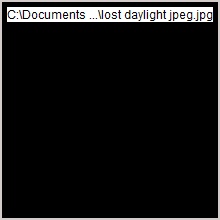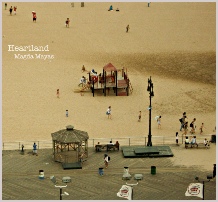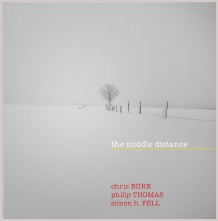Another Timbre TimHarrisonbre
Review of the piano series by Stuart Broomer in Point of Departure, spring 2010
“Lost Daylight - John Cage / Terry Jennings / John Tilbury / Sebastian Lexer at10
The Middle Distance - Chris Burn / Simon H Fell / Philip Thomas at24
Turned Moment, weighting - Stephen Cornford / Samuel Rodgers at-b07
Heartland - Magda Mayas at25
Four recent CDs on another British label, Another Timbre, provide further material for reflection on the state of piano exploration, from acoustic to electronic, from minimalist to orchestral, with works as strongly distinguished by temperament as methodology.
Consideration of the recordings should probably begin with John Tilbury’s Lost Daylight (AT10), which includes a collaboration with Sebastian Lexer on the music of John Cage. It’s also the earliest music represented here – and the only music that’s through-composed-- with performances of works by Terry Jennings as well as Cage. Jennings is little-known and to my knowledge this is the most extensive collection of recordings of his music extant. Born in California in 1940, he began working in the minimalist terrain of Morton Feldman in the late-50s, further influenced by an association with LaMonte Young. He died in 1981 and he and his works appear rarely. Like Young and fellow California minimalist Terry Riley, Jennings would take up the saxophone and modal improvisation, creating a strong bond between jazz and experimental musical practices. Tilbury’s wondrously even touch and sense of detail realize this music beautifully, opening up all the distances in Jennings’ mid-60s pieces like “Winter Sun” and “Winter Trees,” spaces that exist not only in time but also in the intervals of their modes . “Piano Piece, 1960” is so spare that Tilbury seems to be summoning it up from space itself.
Cage’s “Electronic Music for Piano” is sparser still, with Tilbury and Lexer creating a score out of Cage’s 1964 performance notes and adaptation of the earlier “Music for Piano 4 - 84” (from 1953-56). The two have used transparencies of star maps a la Cage and David Tudor and moveable mikes, with Tilbury’s performance then subjected to further randomizing processes and editing by Lexer. Like any successful “performance” of Cage’s later work, its realization is determined as much by the originality of the performers as by Cage’s own, and Tilbury and Lexer are genuine originals. Strongly associated with the methods of Dazwischen, this also makes a fine introduction to Lexer’s development of the “piano +” concept in which the piano is subject to computer processing, feedback , etc., a process in part shaped by earlier Tilbury/Lexer realizations of the “Electronic Music for Piano.”
Currently resident in Berlin, Magda Mayas is a young pianist who has studied with Misha Mengelberg and Georg Graewe, and her work is characterized by tremendous, sustained activity. Heartland (AT 25) is her first solo CD. Mayas plays two long improvisations here, the first, “Shards,” recorded in Berlin, the second “Slow Metal Skin,” at Roulette in New York. Her approach, like Sophie Agnel’s, is rooted in the timbral variety available by playing directly on the strings: striking them with mallets, scratching them, overlaying objects to create reactions that can be triggered either by playing the keyboard or, again, playing directly on the strings. Mayas further affects the piano sound by using very close micing, and there’s some evident distortion achieved through high recording levels. Akin to dance, a series of sonic gestures often employs marked contrasts in pitch and dynamics, from sharply percussive metallic rappings to scratched strings, whistling rubbings and koto-like plucking. Mayas’ flight to the interior frequently employs simultaneous contrasting events in a re-definition of two-handed piano playing. Further, her approach includes micro-gestures that sometimes repeat, creating a soundscape in which a figure moves through uniformity to sudden difference to echoing figures that suggest wandering in circles. It’s evocative, cinematic work with roots in Romanticism and Impressionism, sound coming in great flurries that resemble thunder and delicate tinklings like wind-chimes.
Given the focus of these AnotherTimbre discs on piano exploration, it’s almost a surprise to encounter The Middle Distance (AT 24) played by something like a band, a trio of Chris Burn on piano, Simon H. Fell on bass and Philip Thomas on prepared piano. What is particularly delightful is the way that the three interact. If two pianos usually suggest a degree of bombast, then Burn and Thomas are the antithesis of the typical. Each works with something resembling the meditative discretion of Tilbury or Lexer, a scattering of notes here, a sudden gesture to the interior there. Fell’s sense of line and pitch inflection make him an ideal (and equal) partner and the pianos are redefined in terms of timbral possibility rather than the usual density of harmony, line and event. The performance might serve as a model for the piano in small group free improvisation.
The final entry in the series is Turned Moment, weighting (AT-B07) by Stephen Cornford and Samuel Rodgers, released in Another Timbre’s special series of CD-Rs. Cornford is a sound and installation artist (his work also includes trespassing on the London site of the 2012 Olympics) and here he’s working with feedback, micing a piano that Rodgers plays in an extremely minimalist way. Like the work of Sebastian Lexer, it’s meditative in the extreme, clearly touching on the music of Morton Feldman, and while it possesses little of Lexer’s technical sophistication, it’s nonetheless beautiful work, slowly unfolding music that maintains an extraordinary concentration, taking on the quality of a Japanese temple gong (a fundamental legacy of Cage’s interests in prepared piano, Zen Buddhism and I Ching: take the definitive Western instrument and make it as Eastern as possible). There’s an intense sense of the spatial here, as if Cornford is using the piano and its electronic feedback to measure the room, its psychological parameters as well as its physical dimensions.



